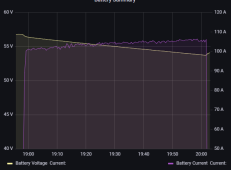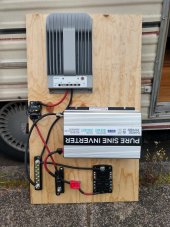wmgeorge
New Member
- Joined
- Apr 22, 2022
- Messages
- 224
Lets solve this with Ohms Law. Assume a 2 ohm load on 12.6 volts, 12.6 / 2 = 6.3 amps now same load as its not changed 10.0 volts /2 = 5 amps. Basic stuff. Less volts less amps. Watts are not constant, watts = volts x amps and if on AC x Pf. Watts are not a constant, loads are.
Last edited:




